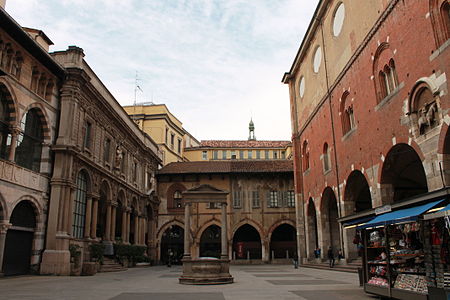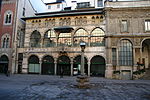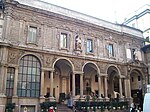Piazza Mercanti

Piazza Mercanti ("Merchants Square") is a central city square of Milan, Italy. It is located between Piazza del Duomo, which marks the centre of the modern city of Milan, and Piazza Cordusio, and it used to be the heart of the city in the Middle Ages. At the time, the square was larger than it is now (as part of it has later become what is now Via Mercanti, the street located between Palazzo dei Giureconsulti and Palazzo della Ragione) and known as "Piazza del Broletto", after the "Broletto Nuovo", the palace that occupied the centre of the square (now on the north side). In the 13th century, there were six entry points to the square, each associated to a specific trade, from sword blacksmiths to hat makers. Until the late 19th century, Oh bej! Oh bej! (the most important and traditional fair of Milan) was held in Piazza Mercanti.
Excerpt from the Wikipedia article Piazza Mercanti (License: CC BY-SA 3.0, Authors, Images).Piazza Mercanti
Galleria dell'Artigianato, Milan Municipio 1
Geographical coordinates (GPS) Address Nearby Places Show on map
Geographical coordinates (GPS)
| Latitude | Longitude |
|---|---|
| N 45.464952777778 ° | E 9.1879555555556 ° |
Address
Torre del Palazzo dei Giureconsulti
Galleria dell'Artigianato
20121 Milan, Municipio 1
Lombardy, Italy
Open on Google Maps










